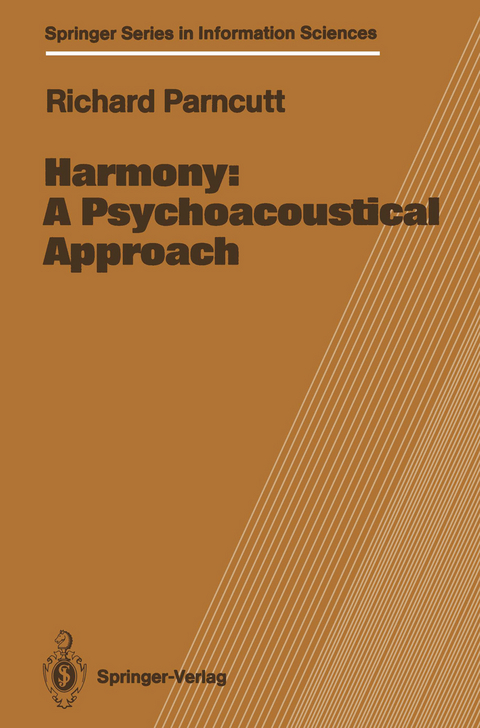
Harmony: A Psychoacoustical Approach
Springer Berlin (Verlag)
978-3-642-74833-2 (ISBN)
1. Background.- 1.1 Music Theory.- 1.2 Physically Based Theories.- 1.3 Psychologically Based Theories.- 1.4 Towards a Psychophysical Theory.- 2. Psychoacoustics.- 2.1 Philosophy of Perception.- 2.2 Auditory Sensation.- 2.3 Extraction of Information.- 2.4 Tone Sensation.- 2.5 Pitch Perception.- 3. Psychomusicology.- 3.1 Conditioning.- 3.2 Consonance.- 3.3 Musical Pitch.- 3.4 Tonality.- 4. Model.- 4.1 General Aspects.- 4.2 Input.- 4.3 Masking and Audibility.- 4.4 Recognition of Harmonic Pitch Patterns.- 4.5 Salience.- 4.6 Sequential Pitch Relationship.- 5. Experiments.- 5.1 General Method.- 5.2 Multiplicity.- 5.3 Pitch Analysis.- 5.4 Similarity of Piano Tones.- 5.5 Similarity of Synthetic Tones I.- 5.6 Similarity of Synthetic Tones II.- 5.7 Similarity of Chords.- 5.8 Discussion.- 6. Applications.- 6.1 Simultaneities.- 6.2 Progression.- 6.3 Pieces.- Glossary of Symbols.- References.
| Erscheint lt. Verlag | 13.12.2011 |
|---|---|
| Reihe/Serie | Springer Series in Information Sciences |
| Zusatzinfo | XII, 212 p. |
| Verlagsort | Berlin |
| Sprache | englisch |
| Maße | 155 x 235 mm |
| Gewicht | 346 g |
| Themenwelt | Naturwissenschaften ► Physik / Astronomie ► Mechanik |
| Schlagworte | acoustics • Crystal • Harmony • Influence • Mathematics • music theory • perception • Physics • Physiology • psychoacoustics • Psychology • System • transcription |
| ISBN-10 | 3-642-74833-3 / 3642748333 |
| ISBN-13 | 978-3-642-74833-2 / 9783642748332 |
| Zustand | Neuware |
| Haben Sie eine Frage zum Produkt? |
aus dem Bereich


